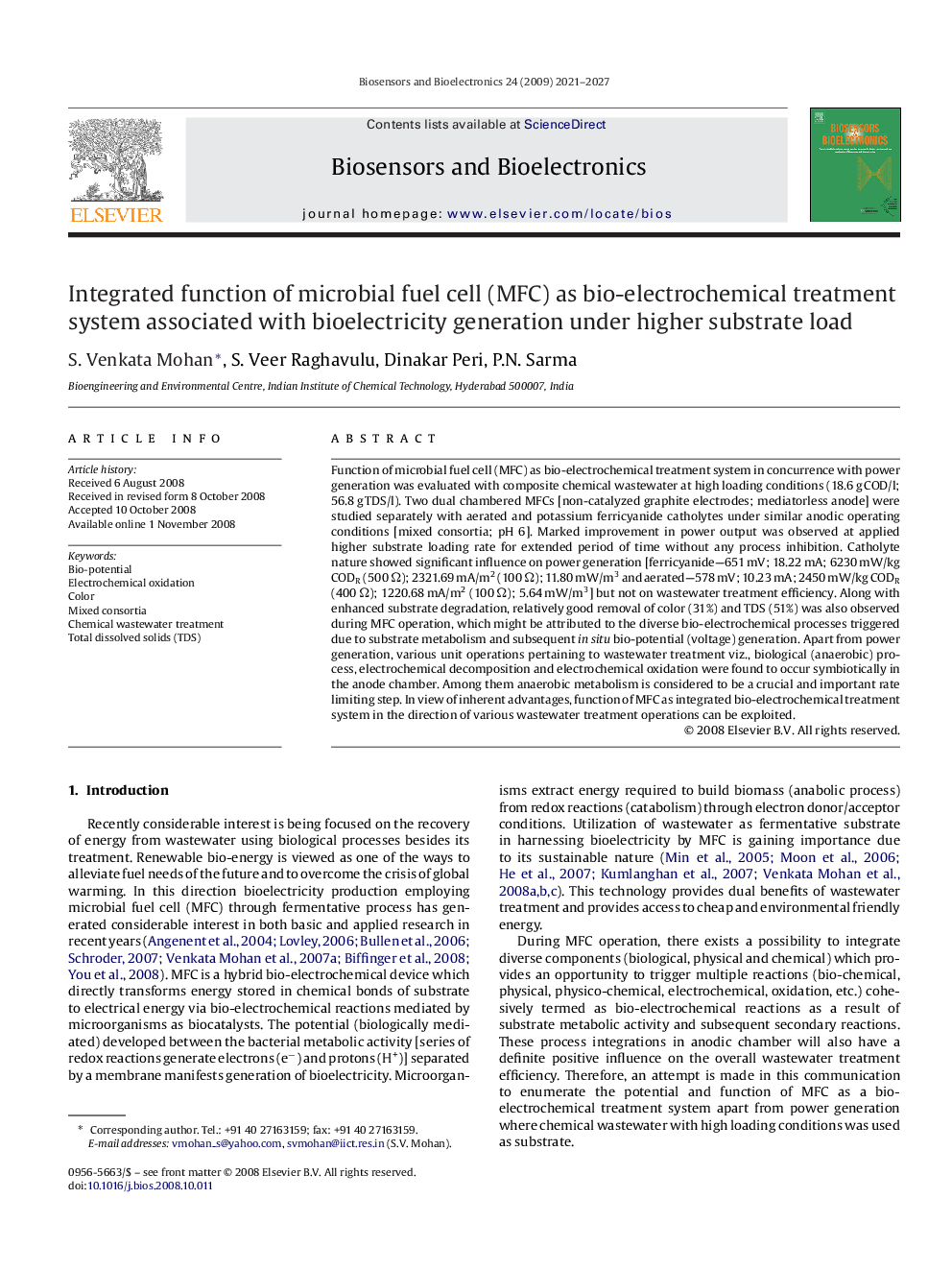| Article ID | Journal | Published Year | Pages | File Type |
|---|---|---|---|---|
| 869756 | Biosensors and Bioelectronics | 2009 | 7 Pages |
Function of microbial fuel cell (MFC) as bio-electrochemical treatment system in concurrence with power generation was evaluated with composite chemical wastewater at high loading conditions (18.6 g COD/l; 56.8 g TDS/l). Two dual chambered MFCs [non-catalyzed graphite electrodes; mediatorless anode] were studied separately with aerated and potassium ferricyanide catholytes under similar anodic operating conditions [mixed consortia; pH 6]. Marked improvement in power output was observed at applied higher substrate loading rate for extended period of time without any process inhibition. Catholyte nature showed significant influence on power generation [ferricyanide—651 mV; 18.22 mA; 6230 mW/kg CODR (500 Ω); 2321.69 mA/m2 (100 Ω); 11.80 mW/m3 and aerated—578 mV; 10.23 mA; 2450 mW/kg CODR (400 Ω); 1220.68 mA/m2 (100 Ω); 5.64 mW/m3] but not on wastewater treatment efficiency. Along with enhanced substrate degradation, relatively good removal of color (31%) and TDS (51%) was also observed during MFC operation, which might be attributed to the diverse bio-electrochemical processes triggered due to substrate metabolism and subsequent in situ bio-potential (voltage) generation. Apart from power generation, various unit operations pertaining to wastewater treatment viz., biological (anaerobic) process, electrochemical decomposition and electrochemical oxidation were found to occur symbiotically in the anode chamber. Among them anaerobic metabolism is considered to be a crucial and important rate limiting step. In view of inherent advantages, function of MFC as integrated bio-electrochemical treatment system in the direction of various wastewater treatment operations can be exploited.
